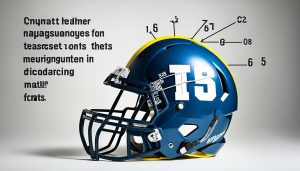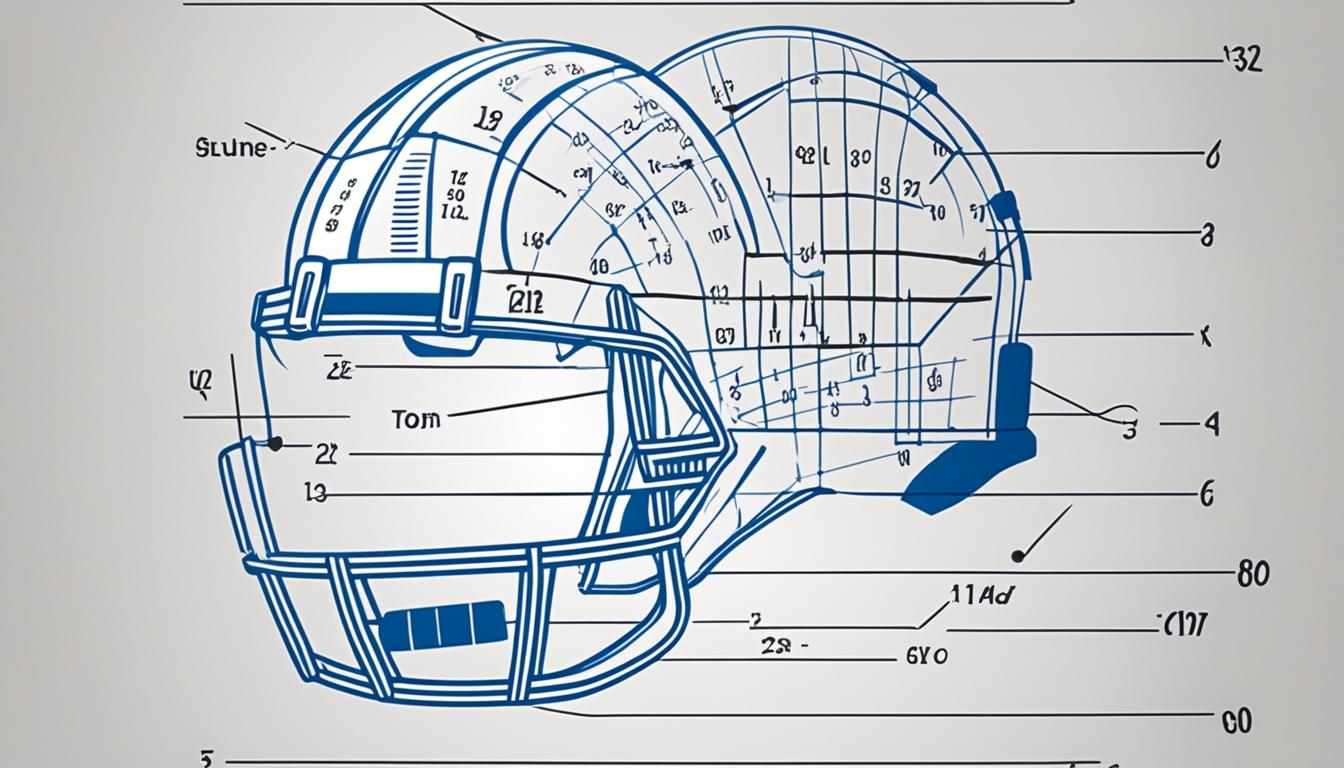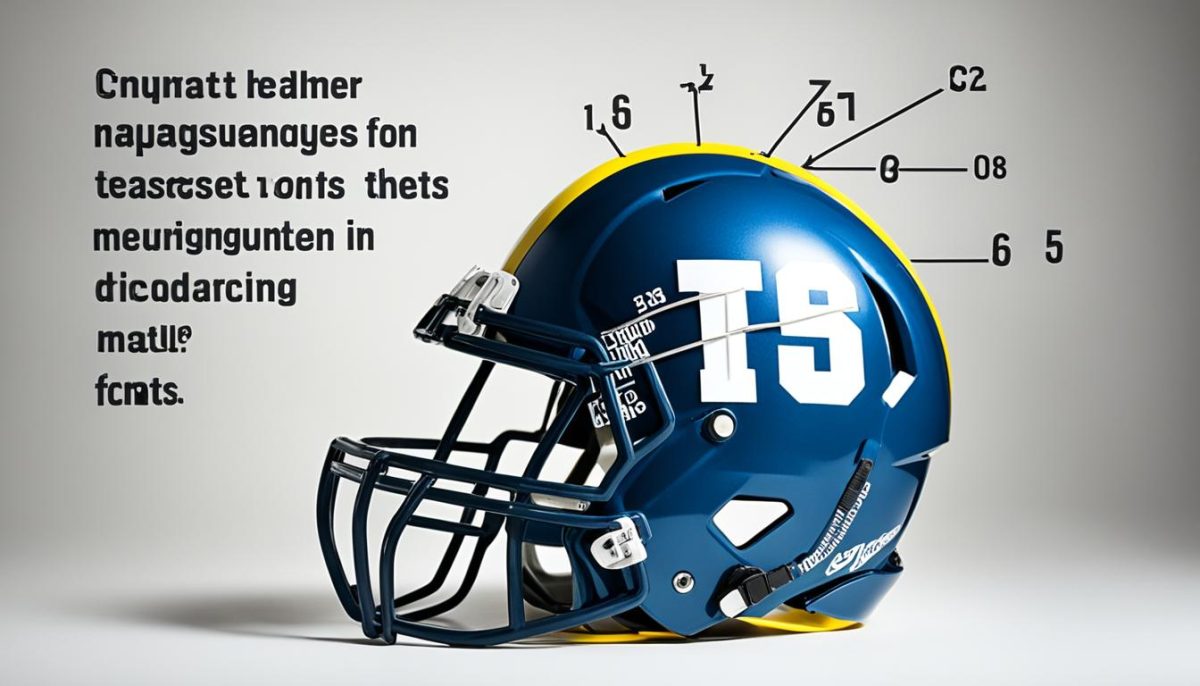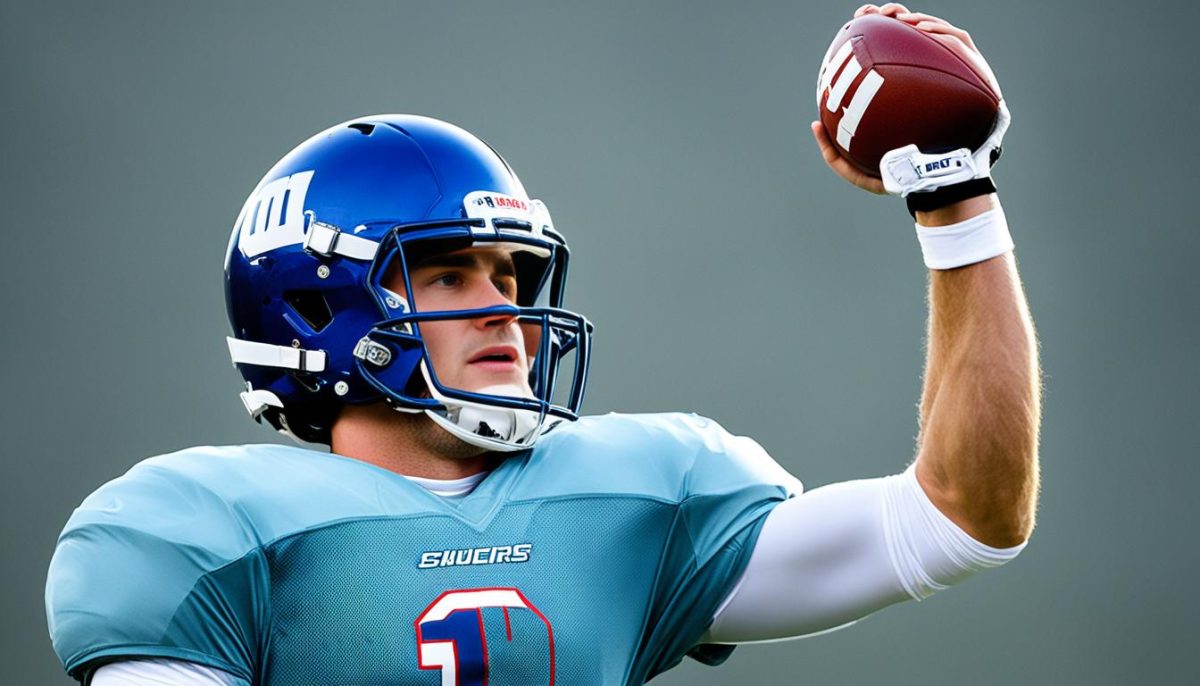Protecting athletes on the football field requires one key piece of equipment:
A properly fitting football helmet. Not only will an appropriate-sized helmet ensure greater comfort and performance benefits; but, how do you know whether this size suits you or not?
Put your beliefs to the test and put yourself through our comprehensive football helmet sizing chart and guide to accurately measuring helmet size. Too often players and coaches rely on outdated methods or guesswork when measuring their helmet sizes resulting in poor fitting helmets which could potentially result in injuries to themselves and/or others.
Let us be your partner in finding that perfect fit using our comprehensive football helmet size guide and chart!
Finding the appropriate helmet size is critical to both protection and performance on the field, so follow our seven easy steps for finding your ideal size! From considerations such as head circumference and shape to manufacturer recommendations when picking out an optimal option.
Make sure to regularly inspect your helmet for signs of damage or wear and tear, consulting healthcare providers if the injury does not respond to basic first aid measures. Know When It Is Time To Upgrade to an Adult Helmet
Knowing when it is appropriate to switch from youth to adult football helmets is an important decision that requires careful thought from both players and parents alike. While no firm age boundaries exist between these categories of headgear, several factors should be taken into consideration before making this decision. Let’s take a closer look.

“There is no definitive age barrier between youth and adult football helmets.”
In general, players should consider upgrading to an adult-level helmet in middle school or between the ages of 12 and 14. At this stage, young players are typically transitioning into more competitive leagues and may require better protection.
Youth football helmets are typically made with ABS plastic, while adult helmets are constructed with a stronger and lighter-weight material called polycarbonate. The use of polycarbonate helmets is often required in high school leagues due to their superior safety features.
“Youth leagues may prohibit the use of adult helmets due to safety concerns, while high school leagues typically require the use of polycarbonate helmets for increased protection.”
It’s essential to consider various factors when deciding to upgrade, including age, league requirements, skill level, individual needs, and budget. Prioritizing safety and comfort is key to ensuring the best helmet choice for the player.
| Factors to Consider | Youth Helmet | Adult Helmet |
|---|---|---|
| Safety Standards | Meets minimum safety requirements for youth leagues | Meets stricter safety standards, often required for high school leagues |
| Material | ABS Plastic | Polycarbonate |
| Weight | Lightweight | Strong and lightweight |
| Protection | Adequate for most youth players | Enhanced protection for more competitive play |
| Budget | Usually more affordable | Varies depending on brand and features |
How to Measure Helmet Size
Accurately measuring your helmet size is crucial to ensure a proper fit and maximum protection. Follow these steps to measure your head circumference and determine the right helmet size:
-
Create an Optimal Measuring Situation
Find a quiet and well-lit area where you can comfortably measure your head.
-
Measure Head Circumference
Using a flexible measuring tape, wrap it around your head, just above the eyebrows.
Pro Tip: Ask a friend or family member to assist you to ensure accurate measurements.
-
Record the Largest Measurement
Take multiple measurements and record the largest one as your head circumference measurement.
-
Consult the Helmet Size Chart
Refer to the football helmet size chart provided by the manufacturer to determine the appropriate helmet size for your head circumference.
Pro Tip: Different helmet types and shapes may have specific sizing considerations, so take that into account when selecting a helmet size.
| Head Circumference (in inches) | Helmet Size |
|---|---|
| 20 – 21 | Small |
| 21 – 22 | Medium |
| 22 – 23 | Large |
| 23 – 24 | X-Large |
By following these measurement guidelines and referring to the helmet size chart, you can ensure a proper fit and optimum protection for your football helmet.
Safety should always be a top priority, and a well-fitted helmet plays a vital role in protecting your head from potential injuries on the field.
How to Ensure a Correct Helmet Fit
A snug and properly fitted football helmet is essential for optimal protection on the field. Follow these steps to ensure your helmet fits securely and comfortably:
- Adjust the chin strap: The chin strap should be snug enough to keep the helmet in place, but not so tight that it restricts your breathing, swallowing, or speaking.
- Eliminate any gaps: Check for any space between your temples and the inner helmet liner or padding. Additionally, ensure there is no gap between your jaw and the jaw pads. These areas should fit snugly against your head and face.
- Consider additional padding: If needed, you can use additional padding or adjust the existing padding and inner headband for a more secure and comfortable fit. Make sure the helmet feels snug without causing any discomfort.
- No movement: When you rotate or move your head, the helmet should not shift or move. It should remain securely in place, providing maximum protection during play.
- Proper positioning: The helmet should sit at the proper spot on your forehead, just above your eyebrows. It should provide you with a clear and unobstructed view of the field.
Ensuring a correct helmet fit is crucial for both your safety and performance on the football field. Take the time to adjust and fine-tune the fit of your helmet for optimal protection during every game and practice.
Features to Consider for Helmet Purchase
When purchasing a football helmet, it is crucial to take note of various features and technologies which will enhance safety, comfort, and performance on the field. Here are a few key considerations when purchasing one:
1. TPU Cushioning
As part of its list of must-have features, TPU (Thermoplastic Urethane) cushioning should be one of your main priorities. This material provides improved impact protection while dissipating energy caused by collisions.
2. Helmet Stabilization System (HSS)
Helmets should offer an ideal, snug fit to maximize their effectiveness at protecting the head. Search for models featuring an effective stabilization system – an adjustable chinstrap and fastening mechanism are usually enough – that ensure it will stay put during intense gameplay sessions.
3. Shell Material, Padding, and Liner
For maximum protection, the shell should be constructed of impact-resistant materials like polycarbonate or ABS plastic to provide optimal safety. Padding and liner should provide ample padding while being moisture wicking to maximize comfort while being easily removable for cleaning and maintenance purposes.
4. Weight
Helmet weight can have an immense effect on performance and neck strain. Look for helmets designed with lightweight construction without compromising safety or protection, for optimal maneuverability and long term use.
5. Helmet Materials:
Top helmet manufacturers utilize advanced materials and technologies such as composite shells, foam padding and impact absorbing liners in order to maximize protection on the field. Look out for brands who invest in cutting-edge technologies like these!
6. Ventilation
Proper ventilation is key to keeping players cool and comfortable during intense gaming sessions. Look for helmets with strategically-placed vents that allow airflow while maintaining structural integrity.
7. Facemask Options
A facemask is an important aspect of helmet safety and visibility. Look for helmets offering multiple facemask styles so that you can select one best suited to your position or personal taste.
By considering these features of helmets, you can find one which offers optimal safety, comfort and performance for your football needs.
Conclusion
Fitting a football helmet correctly is key to protecting the head and avoiding injuries, and following the 7 steps laid out in the football helmet size chart guide can ensure it fits like it should. By considering age, league requirements, budget constraints etc, and selecting an optimal helmet suitable to you based on these considerations.
Make sure your helmet fits securely and comfortably around your head, with no gaps between it and its padding. Monitor its condition regularly in order to preserve its effectiveness – keeping in mind a proper helmet fit is critical not only for optimal protection but also performance on the field.
Spending the time to ensure your football helmet fits appropriately is an investment in your safety as a player, so take all necessary measures to ensure it provides sufficient protection during each and every match.
FAQ
How can I use the football helmet size chart to find my ideal size?
To use a football helmet size chart, measure your head circumference just above the eyebrows with a flexible measuring tape, recording its largest measurement as your circumference measurement. Next, consult the size chart provided by your helmet manufacturer to identify your correct size.
How should I know when it’s time to switch over to an adult helmet?
There is no definitive age range between youth and adult football helmets; however, most players should upgrade to adult-level helmets around middle school, between 12-14 years of age.
How can I measure my helmet size?
To assess your helmet size accurately, wrap a flexible measuring tape snugly around your head just above your eyebrows and ask someone else to assist with the measurement process for maximum accuracy. Take multiple readings of head circumference measurements until obtaining one that stands out as significant – that measurement becomes your head circumference measurement.
How can I ensure an appropriate helmet fit?
Follow these steps for optimal helmet fitting: 1. Create a practice/game situation.
2. Measure head circumference using flexible measuring tape. mes 3 If head calipers are available, they should also be used. 4 Adjust helmet height by increasing or decreasing it by one size increment as necessary, 5 adjust chin strap adjustment accordingly, 6 check pads to make necessary changes, 7 as appropriate
7. Select and fit check an appropriate facemask by performing crown, lateral movement and vertical movement checks.
What features should a helmet possess?
When selecting a football helmet, take into account features like TPU cushioning for enhanced impact protection and durability, an internal helmet stabilization system for secure fit, as well as shell material, padding and liner material – this may all have an effect on performance as well as neck strain. Also pay close attention to weight – how it impacts performance as well as neck strain.
Why does having the proper helmet fitting matter?
Proper helmet fit is of utmost importance in order to provide optimal head protection and avoid injuries, with snug yet comfortable helmets being ideal. Achieving optimal protection requires having a snug fitting helmet which does not move when rotating your head or moving your shoulders; also it must sit properly on your forehead offering clear vision onto the field.








